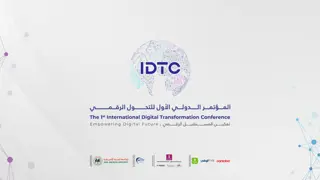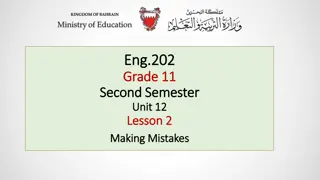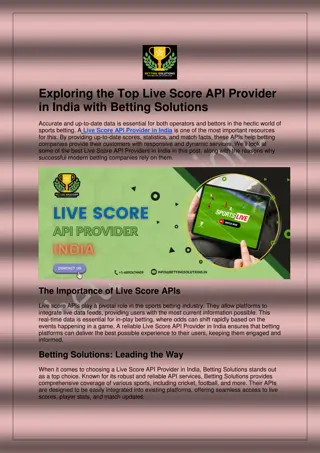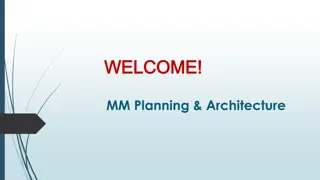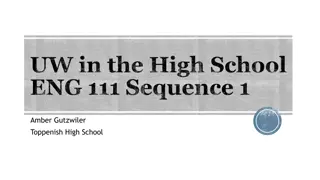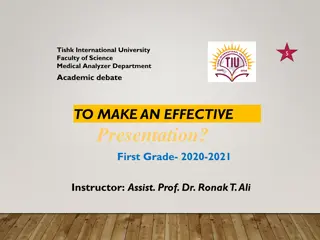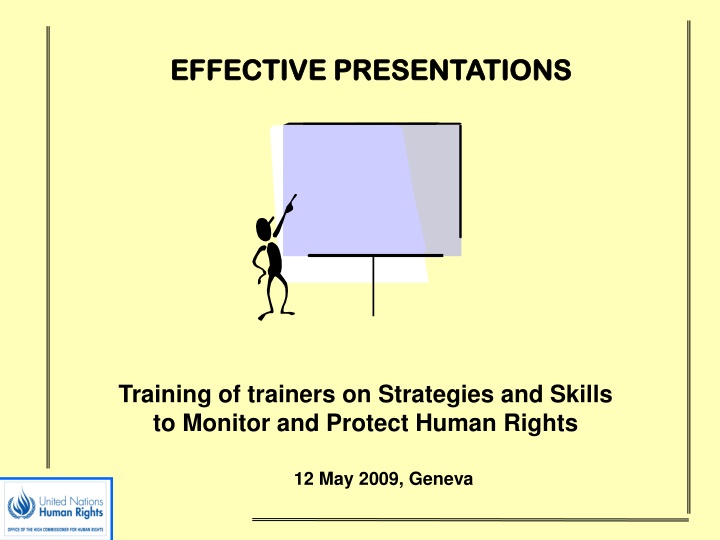
Effective Presentation Strategies for Human Rights Training
Explore the key elements of effective presentations for training on human rights. Discover tips on preparation, structuring your presentation, visual aids, and enhancing audience recall for impactful delivery.
Download Presentation

Please find below an Image/Link to download the presentation.
The content on the website is provided AS IS for your information and personal use only. It may not be sold, licensed, or shared on other websites without obtaining consent from the author. If you encounter any issues during the download, it is possible that the publisher has removed the file from their server.
You are allowed to download the files provided on this website for personal or commercial use, subject to the condition that they are used lawfully. All files are the property of their respective owners.
The content on the website is provided AS IS for your information and personal use only. It may not be sold, licensed, or shared on other websites without obtaining consent from the author.
E N D
Presentation Transcript
EFFECTIVE PRESENTATIONS EFFECTIVE PRESENTATIONS Training of trainers on Strategies and Skills to Monitor and Protect Human Rights 12 May 2009, Geneva
Conditions for effective presentations Open learning setting Experiential learning Learner centered & action oriented approach Feedback and self-assessment Group setting for transformative learning Facilitator characteristics
The mind set Our belief system is vital to our survival but it also acts as a filter for all new information How do we see the world?
Training and Memory After 1 day participants have forgotten 75% 75% 25% 1 Day
1. Preparation 5. How to handle a difficult audience Effective Effective Presentation Presentation 4. Being nervous? 3. Making messages memorable 2. Structure IMPACT Kinesthetic Visuals Voice
Preparation Why? What? Who? Proper Preparation Prevents Poor Performance
Presentation structure 1. Effective start 2. Establish gap What do they know? Why should they listen to you 3. Explain how you will close the gap Objectives Outputs Route map 4. Body Main Messages 3-5 points Explain/Demonstrate Exercise/Associate to reality Debrief, guide and correct 5. Recap 6. Effective ending/Closure/Wrapping
General rules for visuals Large, legible letters Use at least one image/logo/graph per slide Colours Enclose the message in broken frame Keep It Short and Simple: bullet points and max. 6 lines Layout to support the message They help to develop an idea.
VAK VAK We store incoming data in one of 3 ways: Visual Auditive Kinaesthetic
Increase of recall Logos and image associations Acronyms Rhymes and slogans

